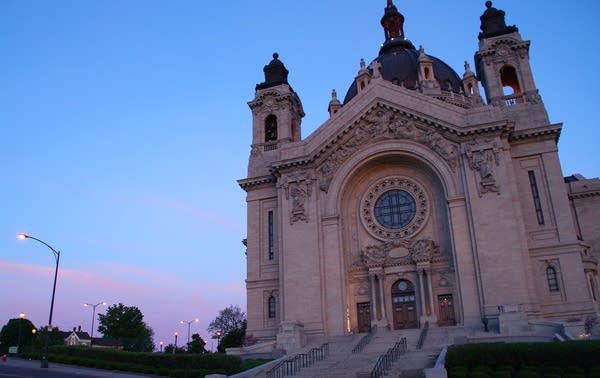A year in the life of the Twin Cities archdiocese

Go Deeper.
Create an account or log in to save stories.
Like this?
Thanks for liking this story! We have added it to a list of your favorite stories.
One of the biggest stories of 2014 was the MPR News investigation of the clergy sex abuse cover-up in the Twin Cities archdiocese.
A year ago this month, a Ramsey County judge forced Archbishop John Nienstedt to release the names of priests credibly accused of sexually abusing children. In the months that followed, the archdiocese faced new revelations about how deep the cover-up went and who was involved.
Explore the full investigation Clergy abuse, cover-up and crisis in the Twin Cities Catholic church
Turn Up Your Support
MPR News helps you turn down the noise and build shared understanding. Turn up your support for this public resource and keep trusted journalism accessible to all.
What's the current state of the scandal?
Much is still happening behind the scenes. Indications are that the archdiocese will file for bankruptcy, though it claims that it hasn't decided yet. If the archdiocese does file for bankruptcy, all of the church's finances would be under scrutiny by a federal judge. We don't know where that would lead or how much money victims would end up receiving.
Has the archdiocese put procedures in place to ensure reform?
Not as far as we can tell. Over the past year and a half, the archdiocese has announced a new task force and appointed various priests and lay people to advise the church on handling abuse complaints, but the structure of the chancery remains the same. The archbishop holds all the power, and does not have to follow anyone's recommendations. The structure that allowed this cover-up to happen is still in place.
It's also important to note some context. This isn't the first time this archdiocese has faced a clergy sex abuse cover-up. Each time, the scandal starts with an allegation that church leaders covered up abuse. Then the archdiocese apologizes, announces new policies, meets with victims and stresses the idea of healing and moving on. Bishops in the 1980s and '90s said the same things that church leaders say now.
Is Archbishop John Nienstedt still in charge?
He is, but more of his subordinates are making statements and granting interviews on the scandal. In some ways, he is no longer the public face of the archdiocese.
About a year ago, Nienstedt authorized an investigation into his private life. It's still not over. Nienstedt has promised transparency and accountability, yet the public knows almost nothing about this investigation. We recently learned that the archdiocese has hired another attorney to continue the investigation, but no one at the chancery will tell the public why.
What's happened between the archdiocese and plaintiffs' attorney Jeff Anderson?
No one had been a louder critic of the archdiocese for its handling of sex abuse cases than Jeff Anderson. He conducted news conferences where he condemned the leaders of the archdiocese and held up photos of priests accused of abuse. That's not happening anymore. At a news conference, he shook hands with church officials and announced a new era of cooperation. There's a more or less orderly process of working through claims from abuse victims.

What are victims saying?
We're just halfway through a three-year window that allows victims of child sexual abuse a chance to sue for older claims. That window closes in May of 2016.
MPR News gets calls from victims who say they haven't told anyone that they were abused, let alone decided whether to file a lawsuit. A lot of these people are men in their 60s, even their 70s and 80s. Almost every victim says he cannot understand why parishioners aren't up in arms over the cover-up.




